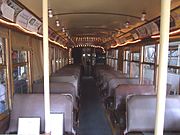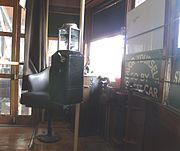Phoenix Street Railway
Washington Street Line, 1938 | ||||||||||||||||||||||||||||||||||||||||||||||||||||||||||||||||||||||||||||||||||||||||||||||||||||||||||||||||||||||||||||||||||||||||||||||||||||||||||
|---|---|---|---|---|---|---|---|---|---|---|---|---|---|---|---|---|---|---|---|---|---|---|---|---|---|---|---|---|---|---|---|---|---|---|---|---|---|---|---|---|---|---|---|---|---|---|---|---|---|---|---|---|---|---|---|---|---|---|---|---|---|---|---|---|---|---|---|---|---|---|---|---|---|---|---|---|---|---|---|---|---|---|---|---|---|---|---|---|---|---|---|---|---|---|---|---|---|---|---|---|---|---|---|---|---|---|---|---|---|---|---|---|---|---|---|---|---|---|---|---|---|---|---|---|---|---|---|---|---|---|---|---|---|---|---|---|---|---|---|---|---|---|---|---|---|---|---|---|---|---|---|---|---|---|
| ||||||||||||||||||||||||||||||||||||||||||||||||||||||||||||||||||||||||||||||||||||||||||||||||||||||||||||||||||||||||||||||||||||||||||||||||||||||||||
North-South Lines, 1938 | ||||||||||||||||||||||||||||||||||||||||||||||||||||||||||||||||||||||||||||||||||||||||||||||||||||||||||||||||||||||||||||||||||||||||||||||
|---|---|---|---|---|---|---|---|---|---|---|---|---|---|---|---|---|---|---|---|---|---|---|---|---|---|---|---|---|---|---|---|---|---|---|---|---|---|---|---|---|---|---|---|---|---|---|---|---|---|---|---|---|---|---|---|---|---|---|---|---|---|---|---|---|---|---|---|---|---|---|---|---|---|---|---|---|---|---|---|---|---|---|---|---|---|---|---|---|---|---|---|---|---|---|---|---|---|---|---|---|---|---|---|---|---|---|---|---|---|---|---|---|---|---|---|---|---|---|---|---|---|---|---|---|---|---|---|---|---|---|---|---|---|---|---|---|---|---|---|---|---|---|
| ||||||||||||||||||||||||||||||||||||||||||||||||||||||||||||||||||||||||||||||||||||||||||||||||||||||||||||||||||||||||||||||||||||||||||||||

The Phoenix Street Railway provided streetcar service in Phoenix, Arizona, from 1887 to 1948. The motto was, "Ride a Mile and Smile the While."[1]
History
The line was founded in 1887 by Moses Hazeltine Sherman and used horse-drawn carts. Many of these lines were built to subdivisions that were being developed by Sherman's land development interests.[2] Beginning in 1893, however, the railway was completely electrified. The line was popular with the locals and was partly responsible for the growth patterns observed in the early history of Phoenix. In 1911, the first of several planned interurban lines opened to Glendale; additional lines were planned but never built to Tempe, Mesa, and Scottsdale.[1] The system reached its height in the 1920s with several line extensions. By 1925, there were 33.6 miles of track on six lines.[3] Line voltage was 550 V-DC.[4]
A potential competitor, the Salt River Valley Electric Railway, in 1912 hired engineers to build lines east from downtown Phoenix to Mesa via Tempe and Scottsdale, and a Southside line, to run from Phoenix to Tempe on the south side of the Salt River.[5] The Salt River company later announced its lines would "connect Phoenix, Scottsdale, Tempe, Mesa, Chandler, Alhambra, Glendale and Peoria."[6] However, other than some digging on Van Buren and Monroe Streets, the line never managed to complete any construction, and was abandoned in 1914.[7][8]
In 1925, the city of Phoenix purchased the Street Railway line and soon instituted numerous reforms, including increased frequency and new streetcars, which increased ridership. Two of the new fleet of streetcars, which entered service Christmas Day 1928, may still be seen at the Arizona Street Railway Museum in downtown Phoenix.
On October 3, 1947, a catastrophic fire destroyed most of the streetcar fleet. City officials faced the decision to either rebuild the fleet or use buses. Buses were ultimately chosen, and the streetcar system was abandoned in February 1948. The Phoenix area turned its focus to the automobile, suburbs, and highways; and until recently relied solely on buses for public transportation. The destruction of the streetcar system may have been part of the General Motors streetcar conspiracy, However, most of the companies involved were convicted in 1949 of conspiracy to monopolize interstate commerce in the sale of buses, fuel, and supplies to NCL subsidiaries, but were acquitted of conspiring to monopolize the transit industry.
Rail transit returned when Valley Metro Light Rail opened its modern light-rail system on December 28, 2008—nearly sixty years after the Street Railway's last run.[9]
Gallery

-
Historic Trolley Car #116 . The restored 1928 trolley served the original Phoenix trolley system from 1928 to 1947. The trolley is on exhibit in the Phoenix Trolley Museum at 25 W. Culver St.
-
Inside the historic Trolley Car #116 .
-
Front inside view of the historic Trolley Car #116 . Pictured is a restored farebox.
-
Different view of the historic Trolley Car #116 .
Operating Pattern, 1938
The City of Phoenix Street Railways, in 1938 were numbered and operated as follows:
- #1 Brill Line (10th Street Line). Ran south on 10th Street from Sheridan to Pierce, west on Pierce, south on 4th Street, west on Washington Street, and terminated at 2nd Avenue station. Return trip traveled north from 2nd Avenue, east on Monroe, to 4th Street, and north via Pierce.
- #2 Capitol / W. Adams - East Lake Park (Washington Street Line). Ran east from 22nd Avenue, across the Santa Fe Railway tracks, to end of the line at 16th 1/2 Street.
- #3 Kenilworth (5th Avenue Line). Ran south from Encanto Blvd. along 5th Avenue, past the Kenilworth School, and terminated at 2nd Avenue station.
- #4 Indian School (3rd Street Line). Ran south from Indian School Road along 3rd Street, with double-track mainline as far as the loop at Monroe. Looped west at Washington and terminated at 2nd Avenue station. Return trip north and via Monroe back to right-hand track and north again on 3rd Street.
See also
- List of defunct Arizona railroads
- Phoenix Trolley Museum
- List of heritage railroads in the United States
- List of town tramway systems in the United States
- Metro Light Rail (Valley Metro is the Phoenix light rail system)
- Phoenix, Arizona public transport
References
- ^ a b Fleming, Lawrence J. (1977). Ride A Mile and Smile the While; A history of the Phoenix Street Railway 1887-1948. Phoenix, Arizona: Swaine Publications. p. 179. LCCN 75027581.
- ^ Eppinga, Jane. "Phoenix's First Light Rail System – Arizona Capitol Times". azcapitoltimes.com. Retrieved 2018-05-01.
- ^ Line segment map (Map). Ariz. Capitol Library call: 4334 P5 P3 1925. Phoenix Street Railway. 1925.
- ^ McGraw Electric Railway List August, 1918. Trade Investigation and Directory Department of the Electric Railway Journal. 1918.
- ^ Electric Railway Journal. XL (6): 234. August 10, 1912.
{{cite journal}}: Missing or empty|title=(help) - ^ Electric Railway Journal. XL (24): 1257. December 21, 1912.
{{cite journal}}: Missing or empty|title=(help) - ^ Electric Railway Journal. XLIV (13): 594. September 26, 1914.
{{cite journal}}: Missing or empty|title=(help) - ^ [1]
- ^ Phoenix 2000 - The Phoenix Transit Plan. https://www.phoenix.gov/publictransitsite/Documents/d_043453.pdf
- "Ride a Mile and Smile the While" segment, KNXV-TV Channel 15, Noon News, 29 May 1998
- "Clang, Clang, Clang Went the Trolley," Arizona Highways magazine, June 1986, pp. 38–43.
External links
- Phoenix Trolley Museum
- A Brief History of Public Transit in Arizona (Arizona Rail Passenger Association)




